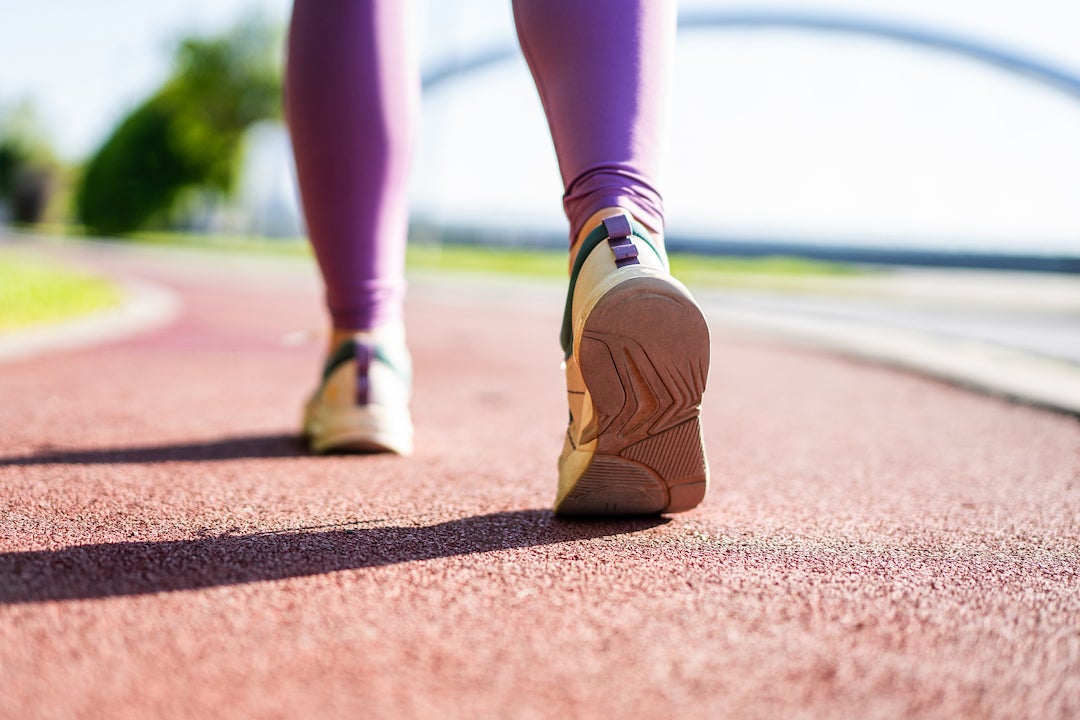You’ve probably heard that running is tough on your knees – and even that it can cause long-term damage. But is this true?
Running is a relatively high-impact activity.
Every time your foot contacts the ground while running, your body absorbs a force that equates to about two to three times your bodyweight.
It’s easy to imagine this load going straight into your knees, and it sort of does. Your knees absorb three times more load during running than walking.
But this isn’t a bad thing.
In fact, running may help keep your knees strong and healthy – here’s what the evidence says.
Designed to keep moving
Your body isn’t simply a pile of bones and cartilage that gets worn down with every step. It is a living dynamic system that grows and adapts in response to the loads that are placed upon it.
And it needs load to keep functioning.
Your knee joint is incredibly strong and designed to move. The cartilage inside your knee is a strong, flexible connective tissue that cushions and protects the bones of your knee joint.
There is good evidence to show that when someone’s load is removed – for example, during prolonged bed rest or immobilisation – their bone and cartilage begin to deteriorate.
Running’s impact on bones and cartilage
We know running temporarily reduces the thickness of knee cartilage. This returns to normal a couple of hours after the run is finished.
Researchers have suggested this may be an important process that facilitates nutrients moving into the cartilage, which can help it adapt and become stronger.
In support of this idea, evidence shows runners tend to have thicker cartilage than non-runners – especially in their knees.
Runners also tend to have better bone mineral density than non-runners. It has even been suggested that the more you run, the better protected you are against developing osteoarthritis (although more research is needed to confirm this).
All of this points to running being good for your knees’ health and longevity – even before we consider the many known benefits it has for heart and metabolic health.
But am I too old to start running?
Unfortunately (at least to my knowledge), there is no strong evidence examining what happens when you pick up running later in life. However, other lines of research do suggest it is likely safe and effective.
A 2020 study demonstrated that older adults (65 years and older) who start high-intensity jump training (known as “plyometric” training) not only see improvements in strength and function, but also find it safe and enjoyable.

And considering this type of training leads to much higher joint loads than running, it gives us a good indication that starting running in later life will also be safe and effective.
However, you should still start slow.
Like any type of exercise, your muscles and joints need time to adapt to the new load that is being placed upon them.
With this in mind, it’s best to start with intervals where you walk for a short period, then jog for a short period. Then you can gradually increase your running distance over time, giving your body time to adapt.
So, why does running’s bad reputation persist?
I believe this myth still persists because, despite all its health benefits, almost half of runners will get some kind of injury each year – and injuries to the knee are among the most common.
However, the vast majority of these are known as “overuse” injuries, caused by issues with load management rather than running itself. This means they are caused by people running too much too quickly, without letting their bodies adapt and get stronger.
All exercise comes with the risk of injury, so we will never completely eliminate the chance of getting hurt. But with respect to running, a few things can help.

First, make sure to progress slowly. Large spikes in how much and how often you run can lead to injuries. So, try not to increase your mileage by more than a couple of kilometres per week.
Second, make sure to eat enough to support your running. Running is an activity that burns a lot of energy. You also need to have adequate energy available to ensure you recover properly after you run.
Eating enough carbohydrates and protein to meet your energy and recovery needs might help prevent overuse injuries such as stress fractures. Some research suggests getting enough calcium and Vitamin D might do the same.
Finally, there is some evidence to suggest that running on grass means less impact than running on harder surfaces such as concrete. So, doing a couple of your weekly runs on grass when you’re first starting might be a good way to help you adjust to the load.
For most of us, the health benefits of running will far outweigh the risks – especially if you take it slow, build up strength, and keep listening to your body.
Hunter Bennett is a Lecturer in Exercise Science at the University of South Australia.
This article is republished from The Conversation under a Creative Commons license. Read the original article.


